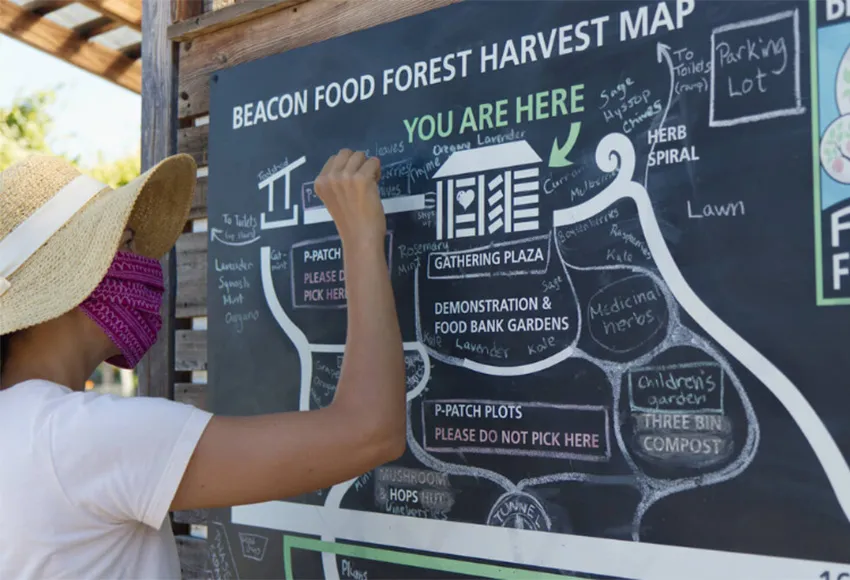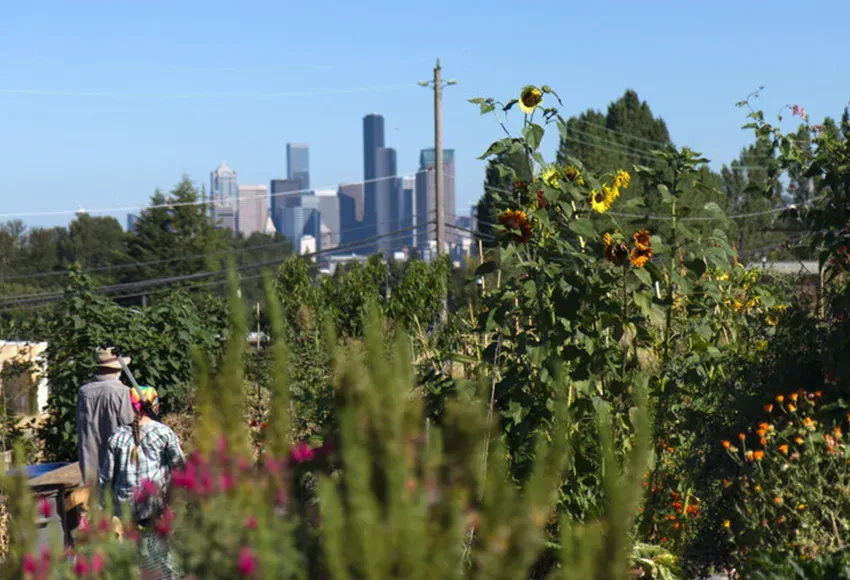Around the world, more and more cities are showing interest in a long-forgotten possibility: local, publicly grown foods (think: foraging). It's the time of year that gardens across Seattle begin to blossom with green leaves and perennials, and some private gardens look like homesteads. If you haven't noticed this about Seattle yet, it's the time of year for a long walk.
While you venture out on this hypothetical walk, let's go back in time. Imagine for a moment that all of the houses, grassy lawns, and sidewalks are gone. What would there be instead? What was here before? Before Himalayan blackberry bushes were brought to conquer sidewalk medians and hillsides, and local food production became private gardening, food used to be ubiquitous here.
Getting back to our roots
Before European settlement, this unceded traditional land of the Duwamish and Coast Salish peoples was host to a plethora of biodiversity. Its forest, grassland, and estuarial ecosystems maintained themselves and their nutrients from "time immemorial," according to Indigenous belief.
In this environment, land and nutrient-rich fresh foods native to the area grew abundantly. Camas, wild carrots, golden currants, and various berry species inhabited this land among and between 13 prominent Indigenous villages. It was like a "food forest," where humanity cohabitated with ecology.
According to the United Nations, our current food systems account for over one-third of global greenhouse gas emissions, mainly due to large-scale monoculture farming in the global north. The latest harrowing report from the Intergovernmental Panel on Climate Change also points directly to colonialism as an ongoing phenomenon detrimental to both Indigenous peoples' health and the climate.
If we were to prioritize Indigenous voices now, my four years of environmental studies education conclude, we would never reach 1.5 – or the latest projection of 2 – degrees of warming from greenhouse gas emissions.
Indigenous farming practices, implemented by Indigenous people or with their help, are the top global solution to climate change, addressing soil health, nutrition (hunger), ecology, water, and land usage. That's why urban farmers across Seattle and the world are stepping up to honor their land and its traditional peoples once again.

Seattle's Beacon Food Forest
In April of 2021, Beacon Hill resident Cherry Liu decided to dig in and launch new programming at Beacon Food Forest, a ten-year-old urban farming project in her neighborhood. It was founded with aims of providing free fresh food to the community.
"A food forest is designed to create an ecosystem that mimics the relationships that are beneficial to humans, animals, plants, and insects in a natural forest," said co-founder Jacqueline Kramer in a video about the project's launch, which was later played at the United Nations Conference on Sustainable Development, Rio+20.
Edible landscaping initiatives like this have been launched around the world since, but Liu says that Beacon Food Forest was the first and remains the largest of its kind. Now, it is also one of the only urban farms and food forests that offers up its own land to social growth and Indigenous teachings, as well as seasonal food production.
Liu started working as the food forest's sole staff member last year, taking great inspiration from Leah Penniman, the activist farmer who authored Farming While Black and who, in 2010, founded Soul Fire Farm in upstate New York.
Liu followed Penniman's lead and learned from Black and Indigenous farmers across the city. She toured meet-and-greets and volunteer events at other local BIPOC farms like Nurturing Roots Farm, Black Farmers Collective, Common Acre, and Black Star Farmers to learn from gardening managers and community members.
"What I was hearing was not that people needed gardening classes or lessons or skills," she said. "It was mainly about access to land, to water, to compost or wood chips. I quickly realized that we had those privileges and resources that sometimes we didn't know what to do with."
To address this surprising revelation, Liu began piloting the Garden Mentorship Program this year, which invites other BIPOC community groups to the seven acres of the Beacon Food Forest.
The program allows knowledge sharing between groups who have historically had their right to land taken from them, and has opened the door at the Beacon Food Forest to more potential for growing culturally relevant foods through partnerships with organizations based in Beacon Hill and the Central District, such as Percussion Farms, a Nonbinary, Black-led urban farming group, and Asian Counseling and Referral Services.
"Our BIPOC Community Garden which will provide delicious and nutritious food for our Beacon Hill neighbors. These include gai lan, collards, cabbage, mizuna, Chinese cabbage, and Japanese mustard. We also planted some rhubarb, strawberries, comfrey, flower bulbs, artichoke, camas, and herbs such as thyme, oregano, and parsley in guilds around our wonderful fruit and nut trees," reads a recent Instagram post.
"It's not just about growing food, it's about connection with nature, connection with the land and with where we all come from," said Liu.
You can find the Beacon Food Forest in Seattle's North Beacon Hill area, adjacent to Jefferson Park at 16th Ave S. and S. Dakota St. Follow https://www.instagram.com/beaconfoodforest/ for updates, contact info, and more.


